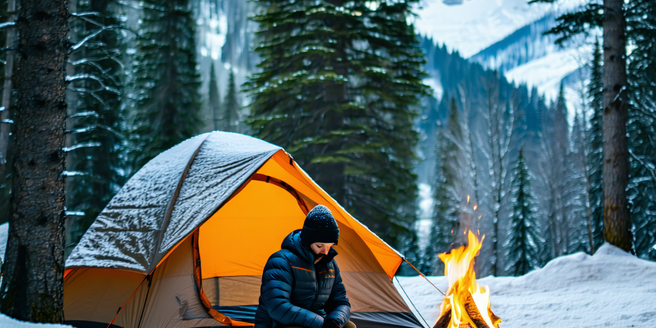
Essential Winter Camping Gear
When venturing out in freezing conditions, equipping yourself properly is crucial. A solid starting point is having a reliable tent designed to withstand heavy snow and howling winds. Additionally, a high-quality sleeping bag rated for sub-zero temperatures will ensure a warm night’s rest. Layering warm, moisture-wicking clothing is fundamental to regulate body temperature. Waterproof boots and durable gloves are also essential to protect against frostbite. Don’t forget a headlamp with long-lasting batteries, a portable stove designed for cold weather conditions, and thermal socks to keep your feet insulated. Preparing these essentials ahead of time can make the difference between a comfortable camping experience and a challenging one.
Selecting Insulated Sleeping Bags
When camping in winter, choosing the right sleeping bag is vital to staying warm and comfortable. Look for bags with high-quality insulation materials like down or synthetic fibers, as these trap body heat effectively. It’s essential to select a bag rated for temperatures below what you expect to encounter. Mummy-style sleeping bags are often recommended for their snug fit and efficiency in retaining heat. Ensure the bag has a hood and draft collars, which also help to prevent heat loss. Additionally, try to find a sleeping bag with a water-resistant exterior to prevent moisture accumulation. By considering these factors, you can select a sleeping bag that offers both warmth and comfort for your winter camping adventure.
Choosing the Right Winter Tent
Selecting the right winter tent is crucial for surviving harsh conditions and enjoying your outdoor adventure. Start by considering a four-season tent designed for snow load and ventilation. A good winter tent boasts a sturdy frame and high-denier fabric to withstand strong winds and heavy snowfall. Go for tents with geodesic or dome shapes as they offer the best stability and strength. Ensure the tent has adequate vestibule space for storing gear, which helps maintain warmth inside the sleeping area. Look for features like snow flaps, which further seal out drafts and moisture. Paying attention to these details will ensure your tent provides safety and warmth in even the most challenging weather.
Layering Clothing for Cold Weather
Mastering the layering system is an art that can make or break your winter camping experience. Start with a moisture-wicking base layer to keep sweat away from your skin. Mid-layers like fleece or wool add insulation, trapping body heat efficiently. The outer layer, your shell, should be waterproof and windproof to protect against the elements. Remember, the key is flexibility; you want to be able to remove or add layers as activity levels or temperatures change. Accessories like hats, gloves, and neck gaiters provide additional warmth. Avoid cotton, as it retains moisture, making you colder. By layering efficiently, you will maintain a comfortable body temperature and stay dry throughout your winter outings.
Safe Cooking Equipment for Cold Environments
Cooking safely during winter camping requires careful selection of equipment suitable for low temperatures. Portable stoves with liquid fuel work best in freezing conditions, as they maintain pressure better than canister stoves. Ensure you have a stable and wind-protected area to cook, minimizing the risk of accidents. Use pots and pans designed for rugged use, as they distribute heat more evenly. Always be cautious about carbon monoxide buildup by not cooking inside tents or enclosed spaces. Insulated containers will keep your meals warm longer, which is crucial when the temperature drops. Planning your meals and cooking methods can play an essential role in staying nourished and safe in cold environments.
Emergency Supplies and Safety Tips
Being prepared with emergency supplies is essential for winter camping safety. Carry a well-stocked first aid kit tailored for cold injuries, such as frostbite and hypothermia. Maps, a compass, and a reliable GPS device are critical for navigation. Keep a fire-starting kit with waterproof matches and a lighter in a sealed bag. Extra food and water, along with purification tablets, ensure you remain nourished if stranded. Whistles, signal mirrors, and a high-visibility vest can aid in rescue situations. Additionally, always inform someone of your route and planned return. By taking these precautions, you minimize risks and enhance your safety during harsh winter conditions.
